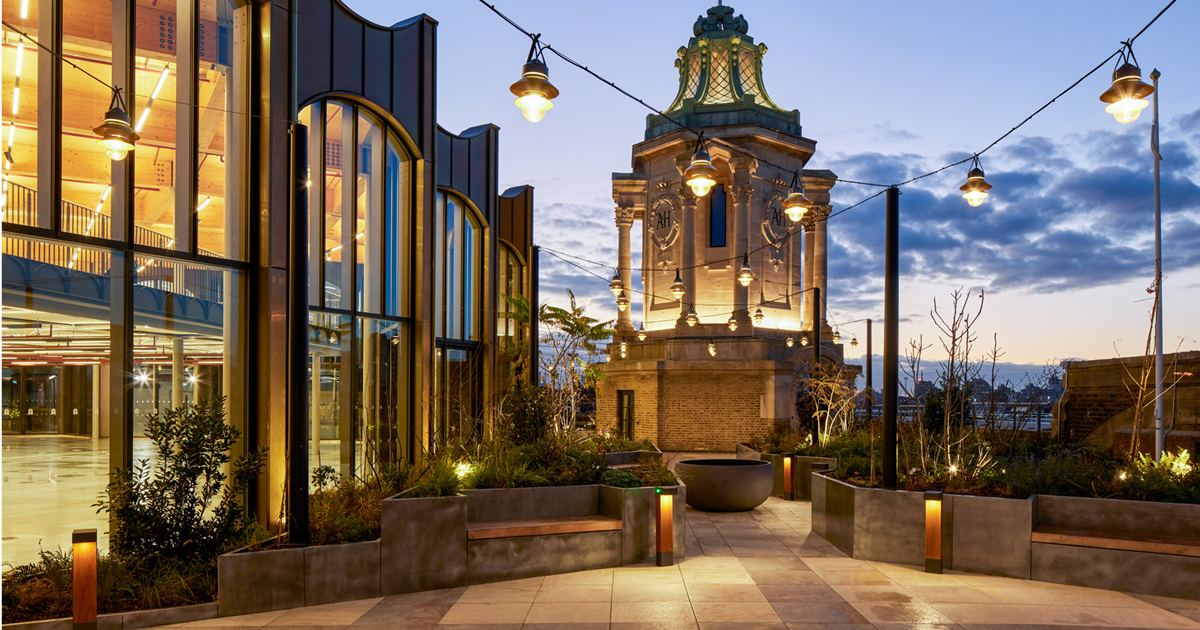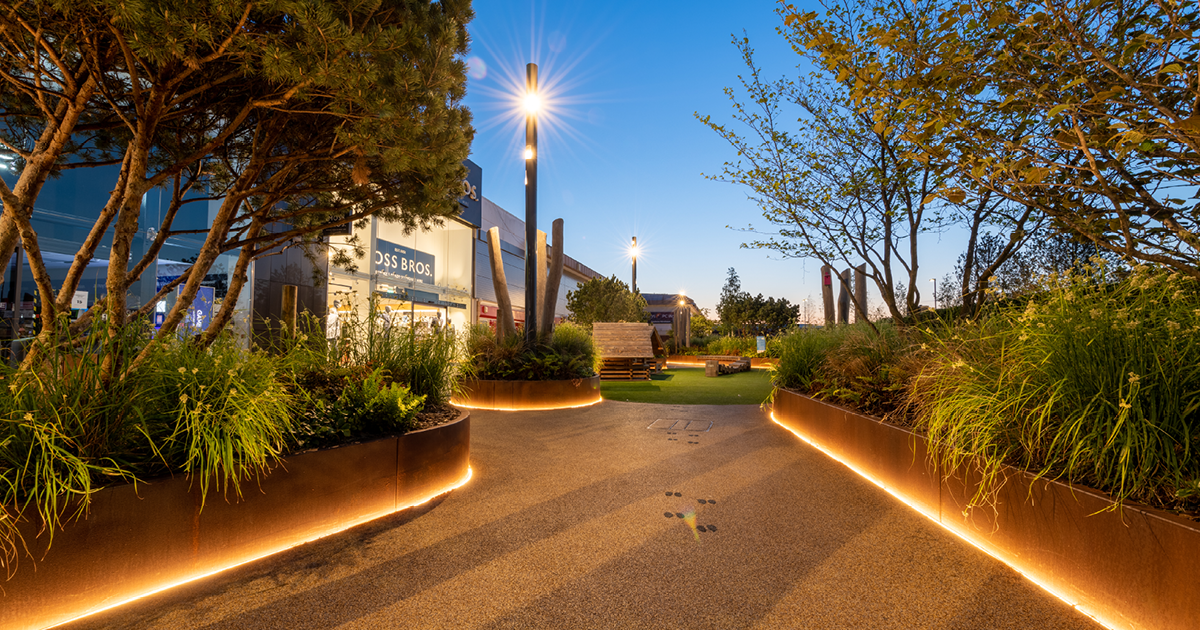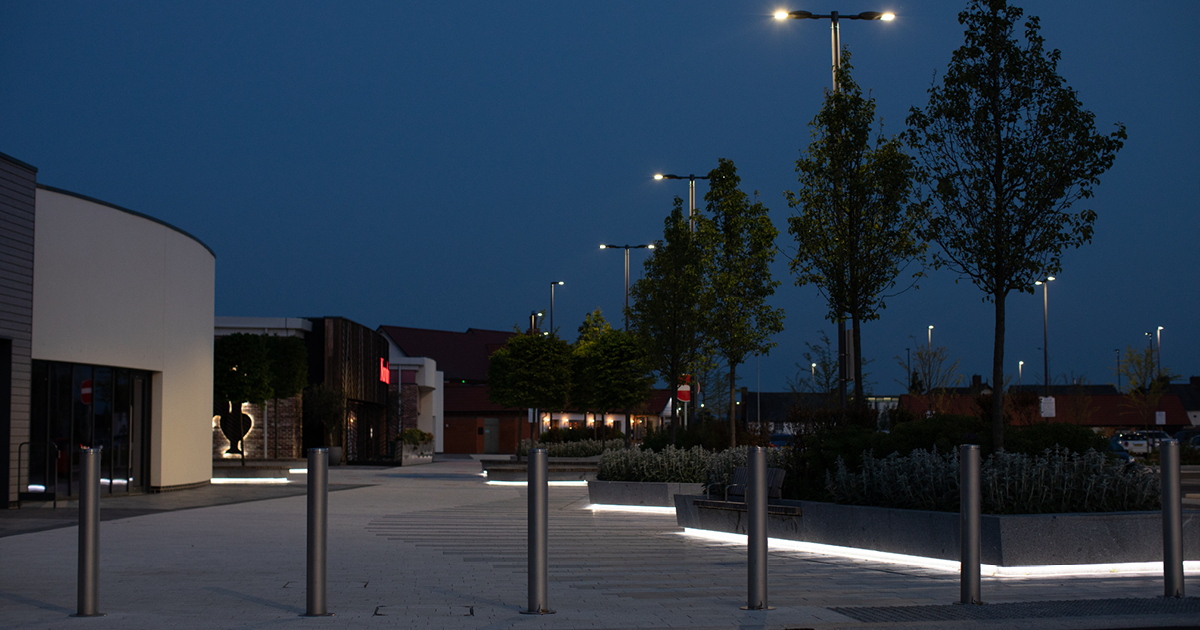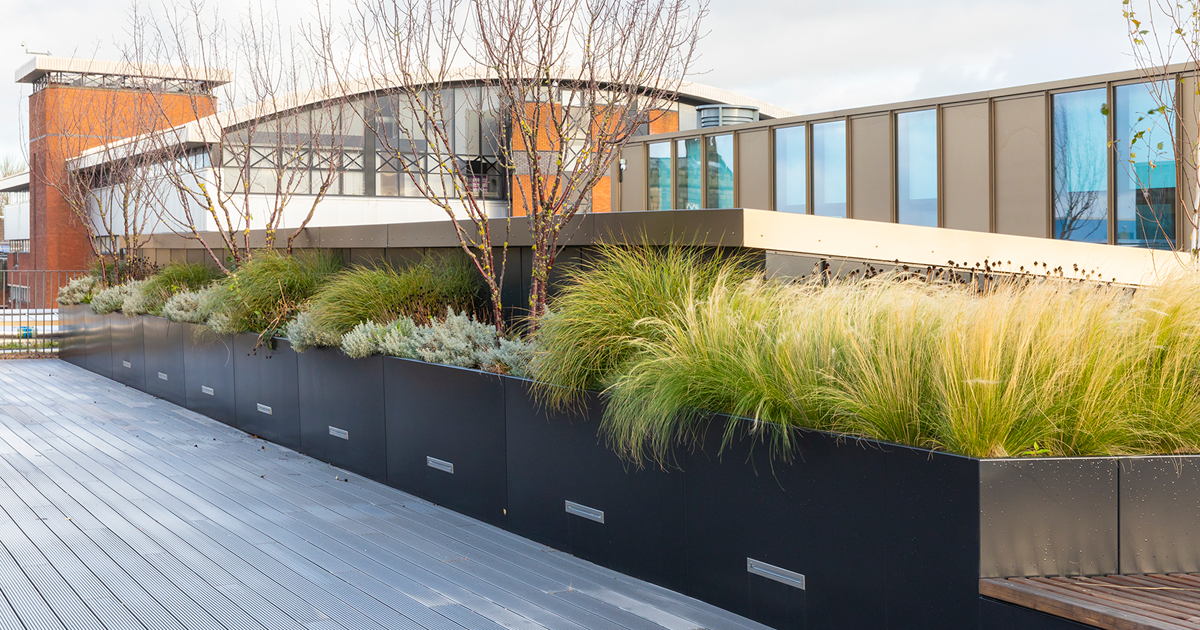
Lighting plays a crucial role in shaping both the function and aesthetic appeal of architectural and landscape designs. Beyond simply illuminating a space, lighting in landscape design enhances the atmosphere, highlights architectural features, and extends usability into the night. This article explores the multifaceted benefits of incorporating strategic lighting into projects, drawing insights from five standout case studies: Arding & Hobbs, The Old War Office, Teesside Park, UCLan, and Stane Park.
Lighting transforms the atmosphere of a space, significantly influencing how people feel and interact within it. Whether the goal is to evoke warmth, excitement, tranquility, or focus, the right lighting design sets the tone. By thoughtfully designing lighting, a space can be both functional and emotionally engaging, creating an environment that suits its intended purpose.

London’s historic Old War Office transformed into The OWO demonstrates lighting’s power. Ambient lighting enhances the raised planter edging, creating a refined and inviting atmosphere. Low-level LED strips subtly illuminate the contours of the planters, highlighting textures and guiding visitors along walkways. This lighting adds depth and makes outdoor spaces visually striking both day and night. Moreover, the design blends modern lighting with the historic grandeur of the building, showcasing its restored elegance in a unique and sophisticated way.
Lighting plays a transformative role in accentuating architectural elements. It draws attention to intricate details that might otherwise go unnoticed. By highlighting textures, materials, and design features, lighting enhances the building’s visual appeal and beauty.

At Arding & Hobbs, lighting has been strategically placed to highlight the building’s distinctive architectural features. LED fixtures accentuate fine details such as cornices, arched windows, and ornate brickwork. Additionally, the clock tower is illuminated with warm-toned uplighting, making it a striking focal point in the evening skyline. Inside, a mix of ambient and accent lighting illuminates the cast-iron columns and exposed beams, preserving the building’s heritage while introducing modern design elements. As a result, this thoughtful lighting design not only enhances Arding & Hobbs’ architectural elegance but also enriches the visitor experience by seamlessly blending the old and the new.
Effective outdoor lighting extends the functionality of spaces, allowing them to be used safely and comfortably after dark. By illuminating walkways, seating areas, and key features, lighting ensures that outdoor environments remain welcoming and practical even when the sun sets.

At Teesside Park, lighting has been carefully designed to enhance both aesthetics and functionality. A combination of ambient, accent, and pathway lighting guides visitors through the park while highlighting key architectural and landscape features. Moreover, dynamic LED installations, which feature color-changing effects, help create a lively and festive atmosphere during seasonal events. This thoughtful lighting design not only ensures safety and ease of navigation but also enhances the overall shopping experience. By balancing both practicality and beauty, Teesside Park’s lighting transforms the space, encouraging visitors to stay longer and enjoy the park after dark.
In addition to aesthetics, lighting plays a critical role in improving safety. Proper lighting increases visibility, reduces the risk of accidents, and deters potential security threats. Well-lit areas provide a sense of security and make people feel safer as they move through public spaces.

At Stane Park, lighting has been thoughtfully designed to enhance safety while also creating a welcoming atmosphere for visitors. LED fixtures illuminate pedestrian walkways, car parks, and key access points, eliminating dark spots and ensuring clear visibility. Motion-sensor lighting and strategically positioned bollards further guide visitors along pathways, improving safety and navigation. Additionally, the lighting design helps to deter crime, contributing to a more secure environment for shoppers and diners. By blending both functionality and aesthetics, the lighting at Stane Park not only improves safety but also fosters a sense of security while enhancing the overall ambiance.
Modern lighting solutions prioritise energy efficiency, which reduces both operational costs and environmental impact. The use of LED technology and smart lighting controls makes it easier to manage energy consumption while still providing effective illumination.

At the University of Central Lancashire (UCLan), inset lighting integrates seamlessly into raised planters across outdoor spaces to enhance sustainability and energy efficiency. Low-energy LED fixtures subtly define walkways and seating areas while minimising light spill. Smart lighting controls adjust brightness based on foot traffic and ambient light, reducing energy consumption. This approach supports UCLan’s commitment to sustainability while providing a safe, energy-efficient environment for students and visitors.
In conclusion, thoughtful lighting design offers numerous benefits, from enhancing architectural beauty and creating the desired atmosphere to improving safety and supporting sustainability. The case studies of The OWO, UCLan, Teesside Park, Stane Park, and Arding & Hobbs show how strategic lighting transforms spaces. By highlighting key features, enhancing user experiences, and promoting efficiency, lighting plays a pivotal role in modern landscape and architectural design. As technology continues to evolve, the possibilities for innovative lighting solutions expand, offering designers powerful tools to create environments that are both functional and inspiring.
Read our article ‘Looking for More Innovative Ways to Use Lighting’ in Landscape Design